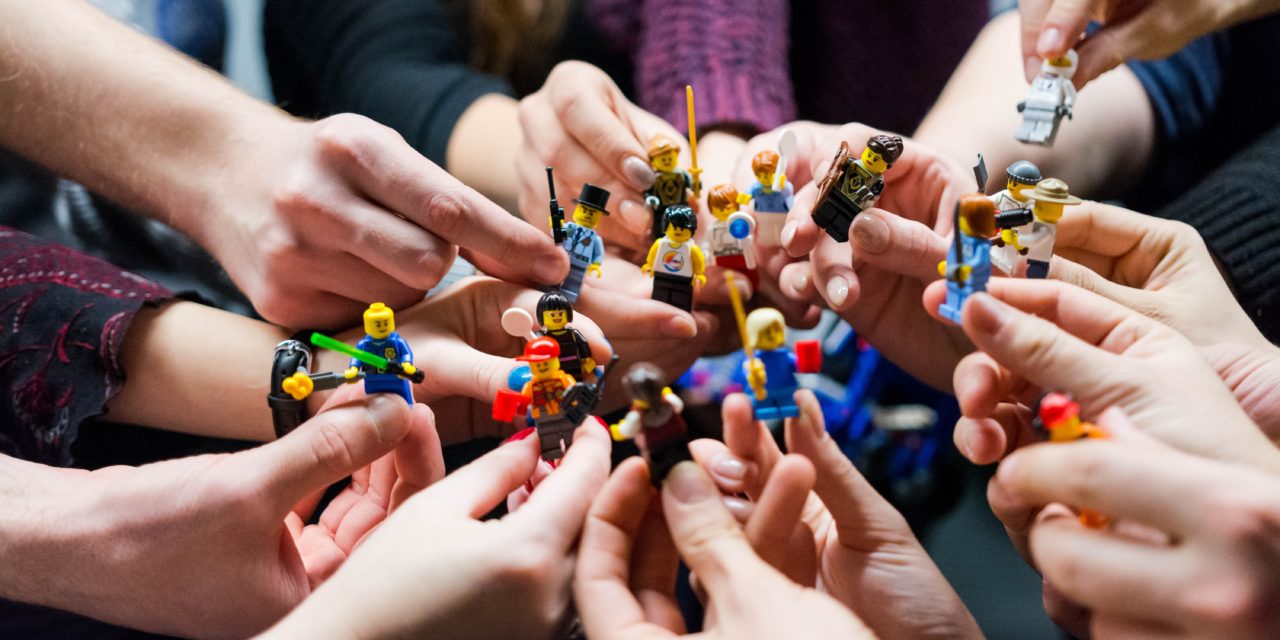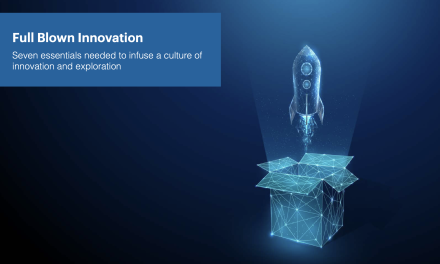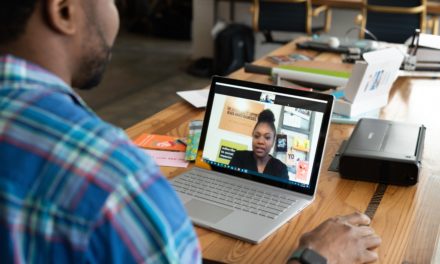Authors: Graeme Codrington & Keith Coats
Experiment more
Probably the single most important thing that you and your team can do to help you succeed in times of disruptive change is to experiment  more and build an experimental culture within your organisation and team. Many business leaders are nervous to mandate experimentation throughout their organisations because they have visions of things blowing up all over the place. And they know that experiments can fail.
more and build an experimental culture within your organisation and team. Many business leaders are nervous to mandate experimentation throughout their organisations because they have visions of things blowing up all over the place. And they know that experiments can fail.
Experiments don’t have to hurt your organisation, or break anything in order to be effective. All you need is to know how to manage them properly, and understand the five important ingredients to proper business experiments that will ensure you get brilliant business benefits.
The theory is simple, the implementation reasonably easy. The hard part is having the guts to actually do it. This is true whether you’re the CEO or business unit head implementing an experimentation culture across your business, or merely thinking of innovating in your team or just by yourself.
Here’s how to build an experimental culture in your organisation, your team and your own life.
Experiments at Work
The reason experimentation is so important today is that we don’t have a clear blueprint for where our industries and marketplaces are going. We’ve never lived with as much uncertainty and complexity as we’re experiencing now. And the experience that resides in our people often is not as relevant as it used to be – the world is just changing too fast right now. We need to ensure we try out new ideas, challenge our assumptions and test innovations big and small. We need to experiment more.
Probably one of the best example of the value of an experimental culture right now is Digital advertising. The way we used to do adverts (on TV and in magazines and newspapers) was to spend a lot of money to get an agency filled with creative types to come up with the best possible advert. We then spent more money placing that advert over a series of media channels and then spent anxious days and weeks waiting to see if it worked. But today, on social media platforms, the process is different. You create tens, even hundreds of versions of your advert, and then try them in quick succession. You might run an advert for an hour or so, and then change it to one with a different background colour or bigger font. You might try the same advert but at different times of the day over the course of a week. This process is called “AB Testing”. It involves many small tests – let’s call them experiments – looking for the optimal solution.
This is what we need to do in almost every part of our work. We need to run AB tests on how we do meetings, on our email communications, on flexible working hours and working from home, on wellness campaigns, office layout, training techniques, sales methods, customer engagement approaches and many hundred other ways you could improve what you and your team and your organisation do every day.
There are five key ingredients to building this kind of culture
We get what we measure and reward. This is an old and wise maxim of life. We need to ensure that our measurement and reward systems do not inadvertently discourage experimentation. We need to reward good attempts. We need to recognise experiments, regardless of their outcomes. We need to support and reward those who try new things.
Ingredient 1: Proper Science
Do you remember the excitement you felt in your High School science class when your teacher came out with a tray of chemicals, put on some goggles and said, “Stand back, kids, this is going to be loud”? I remember my science teacher, Mr Crawford, dropping a piece of potassium into water.
See what happens in the video below .
As they say in the video: “a very satisfying reaction indeed!” He had us all jumping out of our skins. But he had our complete focus.
OK, maybe I’m just a nerd. Maybe you were never that into science anyway. There is no doubt, though, that at some stage during your school career you would have learnt how to set up an experiment. Most of us have forgotten what they look like now that we’re adults. It’s time to re-learn that school skill.
Take a look at the template for the science lab experiment here. Note how structured the process is.
- First we set up an hypothesis – something we want to test, prove or verify.
- Then we specify the materials and resources we will need.
- The third step is to specify step by step the procedures of the experiment.
- When I was at school, we also needed to do a safety analysis at this point, identifying possible danger.
- Now the experiment can proceed, with each step and whatever happens being recorded carefully.
- Analysis follows – what did you observe, why do you think it happened?
- Discussion and conclusions finish off the experiment. The conclusions either confirm or reject the initial hypothesis, and possibly suggest further experiments.
Does that ring any bells for you? I hope it does, because it offers a great template for what we need to be doing in our organisations.
Seriously, you need to look at that science lab report.
This is what you and your team must do on a regular basis (by which, I mean at least twice per month).
- You need to select an issue in your workplace environment that could be improved.
- Create an hypothesis and identify the process you’ll use to test this.
- Specify what materials, resources and budget you need (sometimes, especially at the beginning of creating an experimental culture, you won’t have much to work with).
- Then, proceed to experiment. Document and record what happens, and
- Schedule a time for analysis and discussion.
- Finally, come to conclusions and adjust your workplace accordingly.
- Then, repeat.
Every person in your workplace should have at least two active experiments running at any one time. Some of these will take a few days to complete, others might take months. Some will be small and incremental, others might be large and offer the potential of significant change.
Start small and build your “experimental muscle” slowly – but start. Start now!
Ingredient 2: Failure
 You cannot innovate without experimentation. So if you want innovation in your company, you’re going to have to experiment. But equally you cannot experiment without failure. So, if you want innovation you’re going to have to accept failure.
You cannot innovate without experimentation. So if you want innovation in your company, you’re going to have to experiment. But equally you cannot experiment without failure. So, if you want innovation you’re going to have to accept failure.
Most companies punish failure, or at least hide it away. But very few creative endeavours, advances or innovations are risk free. Tim Harford, author of Adapt: Why Success Always Starts with Failure agrees: “The only way to avoid mistakes is to play it really safe, and that’s no recipe for creativity.”
The approach to scientific experimentation above helps to make failure a positive part of the process. But we can also learn to fail better by doing the following:
- Talk about failures – To learn from failures, you have to admit them, analyse them and openly discuss them with your team. And not just at the end of a project but also at regular intervals throughout it.
- Embrace failure as part of the process – your sales team already knows this. A huge percentage of the people they speak to every day will say “No” to them. But the best sales people also understand the odds, and every person that says No makes it more likely that the one who’ll say Yes is the next person I speak to. These overly enthusiastic sales people can sometimes be a bit painful – but they’re not wrong, and we can learn from them.
- Redefine failure. People are too quick to judge isolated situations and label them as failures. Successful people see setbacks as temporary and even beneficial – they’re something we can learn from. As long as we learn from the failure, it was worth something.
- Remove fear by taking action. In his book, “Failing Forward” John Maxwell explains: “If you can take action and keep making mistakes you gain experience. That experience eventually brings competence, and you make fewer mistakes. As a result of making fewer mistakes, your fear becomes less paralyzing. But the whole cycle-breaking process starts with action. You must act your way into feeling, not wait for positive emotions to carry you forward.”
- Change the way you respond to failure. Some people get angry when they fail. Others, unwilling to accept responsibility, look for scapegoats. Some people, stubborn people, ignore their negative results and continue to repeat their unsuccessful actions. Still others simply give up. Don’t do any of these things. Teach yourself to learn from failure, accept it, own it and move on from it.
Ingredient 3: What you measure and reward
We get what we measure and reward. This is an old and wise maxim of life. We need to ensure that our measurement and reward systems do not inadvertently discourage experimentation. We need to reward good attempts. We need to recognise experiments, regardless of their outcomes. We need to support and reward those who try new things.
Ingredient 4: Thought Experiments: Ten Times
Seth Godin must take credit for teaching me this. You see, we humans are woefully unprepared to deal with orders of magnitude. What would happen if suddenly our company got ten times as many orders. What would the streets look like with ten times the traffic. What happens if we suddenly earned one-tenth the revenue next quarter? Ten times as fast. Ten times as powerful. Ten times the profit (I see I have your attention again). Orders of magnitude are not normally how we think.
Seth Godin says: “Because dramatic shifts rarely happen, we bracket everything on the increment, preparing for just a relatively small change here or there. Except those messages now travel 50 times faster than they used to, sent to us by 100 times as many people as we grew up expecting. Except that we’re spending ten times as much time with a device, and one-tenth as much time reading a book. Here it comes. The future adds a zero.”
So, try some thought experiments with your team. What would happen if you had an order of magnitude in your business. Clients needed your product to be one-tenth of the price, and delivered ten times faster than before. Your brain will initially freeze, and you’ll say it’s impossible. But don’t stop there. Push yourself.
“What if” is one of the most powerful of all questions. So ask again what would you do if you were faced with situations like this. Maybe you’ll surprise yourselves by thinking of things you’ve never thought of before – some things that might actually allow you to change what you do today.
You may never get to “ten times”, but you can do better than you’re doing now. With an experiment or two to test it out.
By the way, “ten times” is only one such thought experiment. An experimental culture is built on a variety of such questions. What if? Why not? Why do we do it this way? Can this work better?
Watch this video for inspiration:
 Ingredient 5: Persistence
Ingredient 5: Persistence
Never give up. I don’t think anyone knows how many light bulbs Thomas Edison actually made before he found one that worked. It was certainly thousands. He just never gave up. Neither should you.
Some of your experiments will not work. In fact, most won’t. But the ones that do will change your life, change your workplace and change the world.
Experiment more. It really is the key to success you’ve been looking for.
Nine techniques to train your brain to be more creative
Creativity is as much a skill as a gift, and as such, it can be developed. Of course, some people are naturally more creative than others, but all of us are able to develop our creativity and improve our innovative thinking ability. No matter what you do or what your job function is, you will do better if you can add creativity to it. With innovation now a ubiquitous requirement for success any and everywhere, we have to do this.
Here are nine techniques to improve your creative thinking abilities:
William Duggan’s “Strategic Intuition” is an excellent book provides a  detailed study of the thinking that leads to strategic insights and new ideas. One of the pillars of his approach is that we need a depth of knowledge and expertise in our chosen profession combined with a breadth of knowledge and experiences across a wide range of disciplines.
detailed study of the thinking that leads to strategic insights and new ideas. One of the pillars of his approach is that we need a depth of knowledge and expertise in our chosen profession combined with a breadth of knowledge and experiences across a wide range of disciplines.
It’s kind of obvious, but feeding our brains with a wide variety of thoughts is the fuel we need for creativity. People who are creative tend to read widely, enjoy entertainment and enjoy meeting people from different backgrounds. Creativity’s fuel is your imagination – make sure you fill up the tank.
2. Understand your brain profile, and stretch yourself
There is some debate about whether we have an actual “right” and “left” side of our brains – I don’t think we do. But our brains do have a variety of very different functions, with logical analysis on the one side and artistic ability on the other – with a whole range of functions in between, and some of us prefer one or the other approach to thinking. Our normal thinking and processing style is impacted by a number of factors, including our personalities. So, take some time to understand how you typically approach information.
For example, in the Meyers Briggs Temperament Indicator (MBTI) profile, we discover how we prefer to take in information (either big picture or more detailed analysis) and how we prefer to make decisions (on the basis of logic or on the basis of relationships), and we also discover whether we prefer to live life in a structured way or more spontaneously. Whichever profiling tools you use, make sure you are conscious of your default settings. These will be your thinking strengths, but can also blind you to alternative ways of thinking. Know your strengths, and stretch yourself to think in new ways too.
3. Be more curious
The human brain cannot possibly take in every piece of information that exists, so there is always something more to learn. We need to cultivate a curiosity that continually asks questions and has a thirst for learning. Your next idea won’t come from copying what someone else has already been thinking. So look for new ideas in different places, ask questions and keeps developing.
4. Engage with people who see the world differently to you
As part of a curious attitude, we should actively spend time with people who are different
from us – especially including people who might irritate or frustrate us. We don’t have to agree with someone to have a good and healthy conversation with them, and seeing the world through someone else’s eyes helps to spark our creativity.
If you’re trying to deal with a specific issue, asking for help isn’t a sign of weakness. A fresh outside perspective, or three, or many more from people we trust and people with relevant expertise and insights, may be just what we need. Even if you don’t use their advice, it may spark some new, creative thinking that will get you what you need.
5. Explain things to other people (or just yourself)
Being creative requires that you understand the information you have. It’s one thing to read a book and study a subject, but it’s another thing entirely to be able to explain that topic to someone else (or even yourself). Being able to explain new knowledge shows that you have processed and internalized the information on a deeper level, and a have a grasp of the depth and breadth of the topic. Make sure you explain things, to make sure you understand them.
6. Pursue new experiences
Putting yourself in the way of new ideas and new experiences will help you open your mind. The more you develop an openness to new experiences, ideas, concepts, food, places and people, the more likely you are to be more creative. Travel is especially helpful for this. If you can’t travel physically, then travel in your mind and through movies and books.
7. Don’t be scared to be wrong – and to change your mind
The fear that you might make a mistake or fail in your efforts can paralyse your progress. Mistakes are simply part of the process. But it isn’t just mistakes we must embrace, we must also become more comfortable being wrong. Not deliberately and not on purpose, of course. But we should be willing to question our beliefs and change when new information shows us we are incorrect or ill-informed.
8. If you’re stuck… Look for the worst ideas possible
Yes, you read that right. if you’re battling with something, step away from what you’re thinking of for a few minutes. Taking a break can really help. But then try this: What’s the most useless idea you can imagine? Make a list of the worst ideas you can think of. Now the real challenge to stretch your creativity: what are the best features of these terrible ideas? Looking at the opposite of where you are aiming can help spark an excellent idea. Seriously. Try it.
thinking of for a few minutes. Taking a break can really help. But then try this: What’s the most useless idea you can imagine? Make a list of the worst ideas you can think of. Now the real challenge to stretch your creativity: what are the best features of these terrible ideas? Looking at the opposite of where you are aiming can help spark an excellent idea. Seriously. Try it.
9. Make Time for Creativity
Creativity does not arrive on command. It needs time and space. We need to give ourselves time to let our minds wander, to daydream and allow space for new ideas to emerge. Many people find creative exercises useful, such as doodling in a sketchbook, writing flash fiction or even playing video games. Keep a journal of your ideas, however fantastical or impractical they might be.
You won’t be able to develop your creativity if you don’t make time for it. Schedule some time each week to concentrate on some type of creative project. For most people, including the very creative, the best ideas come when we’re not wracking our brains trying to come up with the next great idea. That great idea could even come while we’re sleeping. A good night of rest is often the best help to be more productive and creative. If your creativity is lacking, unplug. Relax. And let your brain do its magic.
Before wrapping this article up, there’s one last topic we need to address – failure.
Our failure to talk about our failure becomes a problem within organisations, one that impacts on both innovation and adaptability.
Failure: How we fail when it comes to failure – Six things to ensure successful failure
The norm is to reward and celebrate success. Nothing wrong with this unless it means that we hide failure. In many successful environments, the tacit ignoring of failure is often the prevailing cultural norm. It didn’t start like that but somehow, over time, it becomes an entrenched part of the organisational fabric. By the time we notice this to be the case it is too late and somehow attitudes towards failure have hardened, we stop experimenting, learning stalls and we look to increasing efficiencies in order to keep pace with the competitors. Of course all the right rhetoric is present, talk of innovation and creativity abound but have little traction and real application. In these environments talking about failure is simply an unspoken taboo.
Dealing with failed initiatives is an essential leadership responsibility. In a survey done by the Leadership Institute in London an interesting similarity emerged between both small and large companies when it came to dealing with failure. Both listed three common ways in which failure was dealt with within their organisations:
- The results (of failed initiatives) weren’t shared
- There was no obvious link between failure and learning
- Failure was simply not talked about
When this becomes the prevailing norm the consequence is that those deemed ‘to have failed’ become stigmatized resulting in their careers stalling. So although there is talk of experimentation and ‘stretch’ the reality is that people are too afraid to risk everything and have their copybook blotted by some or other failure.
How would you rate your own environment’s tolerance towards failure?
Failure is an essential part of learning and learning is an essential part of what it means to be adaptable. This ought to be motivation enough to ensure that your environment is one that not merely tolerates failure but welcomes it.
Here are six things that you can do to help foster such a tolerance:
- It might be easier to talk about ‘experimentation’ rather than ‘failure’
- If you are going to fail, learn to fail fast
- Make this an agenda item throughout your organisation – talk about what is not working and why; share ideas as to what could be improved
- Be transparent and vulnerable when it comes to your own failures – and share what you learnt as a result. You doing this gives permission for others to talk about their own failure
- Ensure that your learning and development initiatives embrace experimentation as part of the design of the actual process. It is not good just talking about it in such programmes, it has to be modelled and such modelling provides opportunity for learning for both the participants and the trainers.
- Celebrate failure. Create a personal or departmental award for the best learning to result from a failure. Find a way to ‘reward failure’ but not just failure – but failure that results in significant learning.
Now go and build a culture of experimentation for yourself and your team.
Authors: Keith Coats and Graeme Codrington.







Fantastic article, Keith & Graeme!